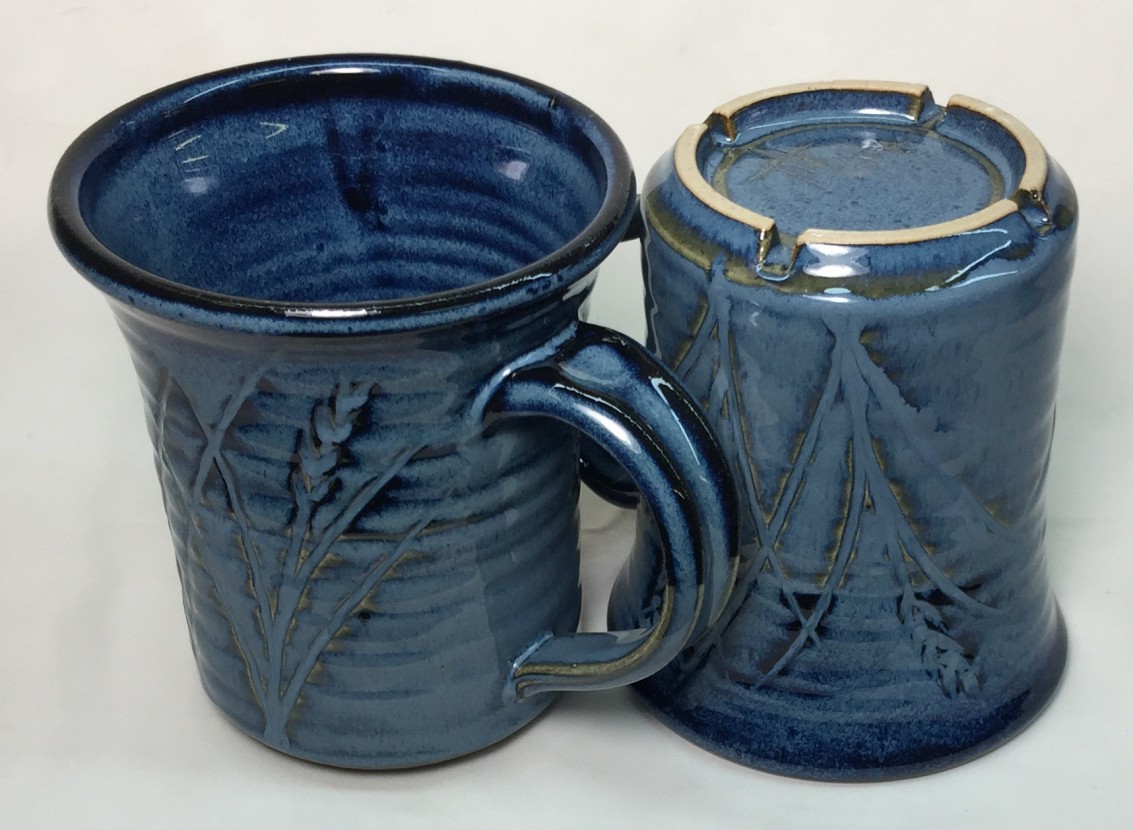Home
Glazes, Engobes
GR6-A Ravenscrag Cone 6 Base
Description
Ravenscrag Slip melts by itself to a silky cone 10 glaze (no additions are needed). This recipe adapts it to cone 6 by adding 20% Ferro Frit 3134.
Glazing
When mixed with water to create a thixotropic slurry, this will perform was as a dipping glaze. It will apply evenly to bisque, produce minimal dripping and dry within seconds and be adequately durable for handling. We document procedures to mix this as a brushing glaze or dipping glaze.
If you are glaze layering (using this as a dipping glaze and painting a commercial gummed brushing glaze over it) there is a risk of crawling. It may be necessary to add some gum to this, converting it from a dipping glaze to a base-coat dipping glaze.
Glaze Recipes
If crazing occurs on your clay body there is a low expansion version of this: G2936.
This glaze is most often prepared using the traditional method of simply adding water until the desired consistency is achieved (start with 8 parts water and 10 powder). We find that 1.45 specific gravity works for us (using our tap water). No flocculant additions are generally needed to make the slurry thixotropic. Application properties are very good as long as the slurry is not too viscous or too runny (dries quickly on bisque without cracking and, after dipping, there is minimal dripping).
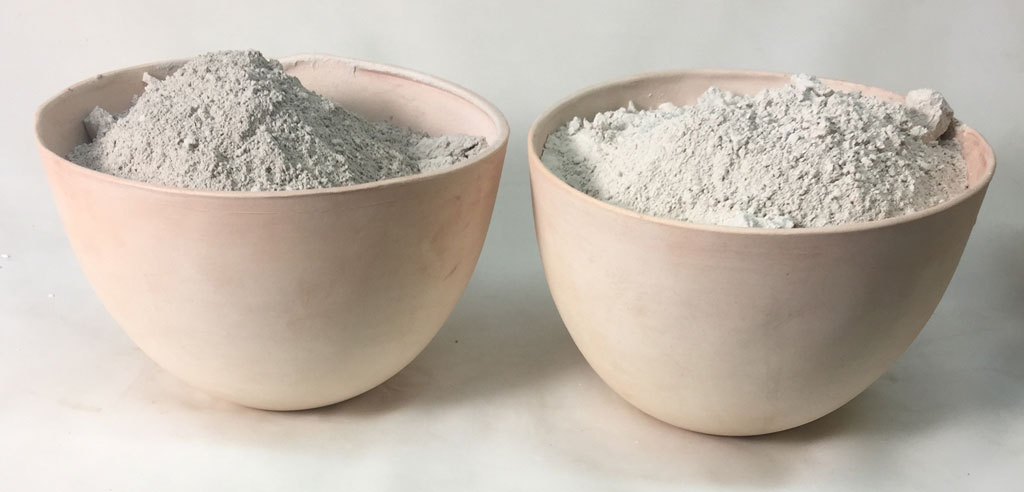
Left: Raw Ravenscrag Slip powder. Right: Roasted at 1080F. This is a silty clay, thus it has a relatively low drying shrinkage. Where a glaze is applied thickly or the percentage of Ravenscrag is high, shrinkage cracks (which produce crawling during firing) can occur. We recommend a mix of roast and raw material in recipes. Roasting the Ravenscrag powder at 1000F greatly reduces the shrinkage. Use a firing rate and hold-time-at-1000F appropriate for the wall thickness and size of your bisque vessels (e.g. 500F/hr and 30 minutes for thin-walled small vessels, slower and longer hold for large ones). If any of the powder within is black, increase the hold time for the next firing. Adjust proportions as needed (more roast if the glaze cracks on drying or more raw if it is drying too powdery or not bonding well).
The roasted material has a weight-loss of about 3% on firing (vs. 9% for the raw powder). This difference can be ignored in most cases. But, to be more precise, use 3% less of the roasted powder (multiply the amount by 0.97). For example, suppose you need 1000 grams of a 50:50 raw:cacline Alberta Slip mix for a glaze recipe. Use 500 raw and 500*.97=485 roast.
Gallery
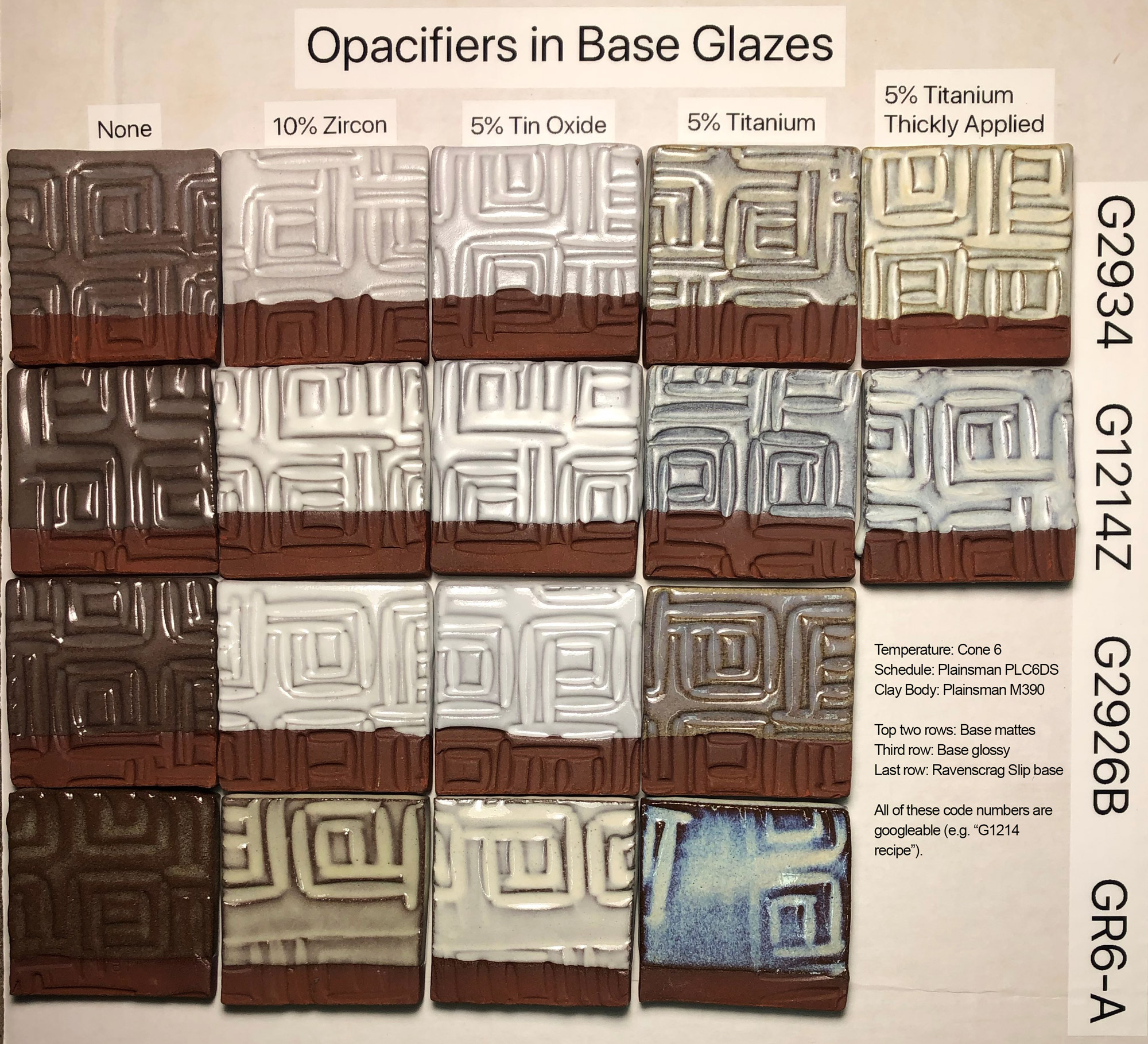
The body is Plainsman M390. These are commonly used base glazes. The top one is an MgO matte, the next is a calcium matte. They behave very differently to these additions. Notice also that thickly applied titanium dioxide is very different. Tin oxide fires whiter than zircon (e.g. Zircopax). Also, zircon opacified glazes tend to crawl so special precautions may be needed.
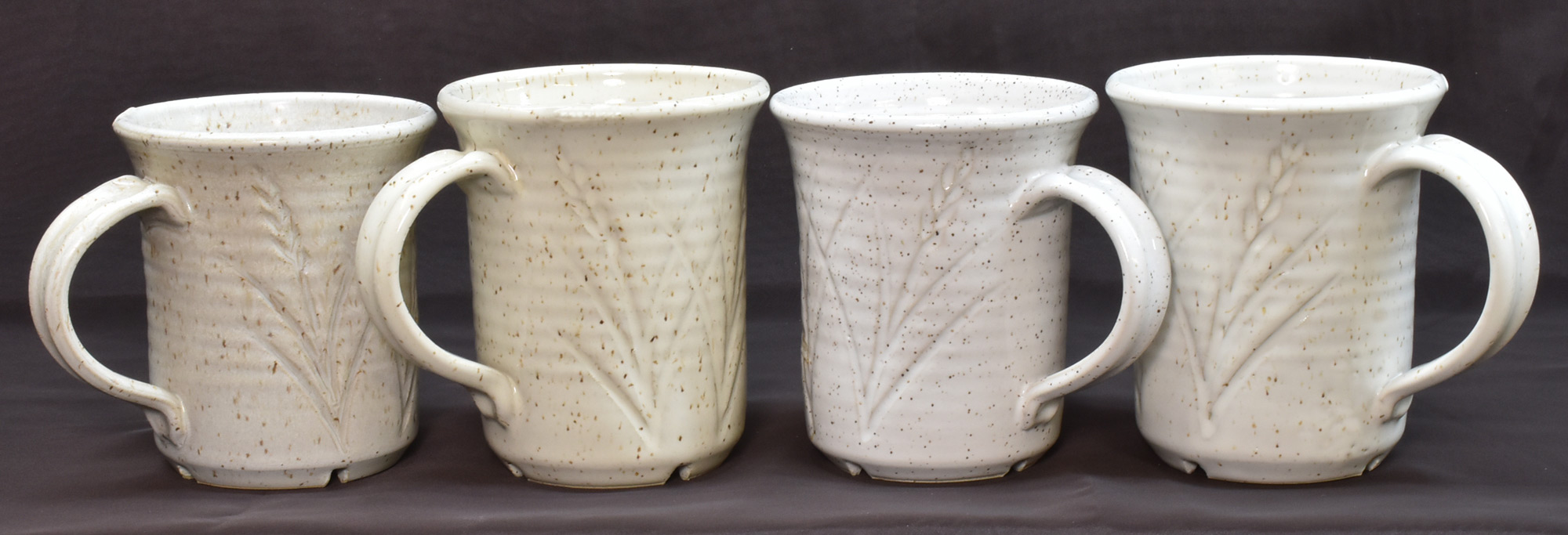
The body is Plainsman M340S. Cone 6. Left to right: G1214Z calcium matte base glaze with 6% titanium dioxide added. GR6-A Ravenscrag base with 10% zircopax (zircon). G2926B glossy transparent base with 10% zircon. G2934Y silky magnesia matte base with 10% zircon.
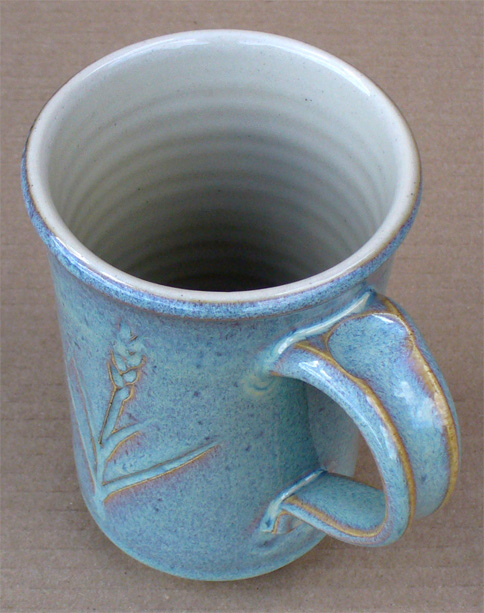
This M340 mug has GA6-C Alberta Slip rutile blue (outside) and GR6-C Ravenscrag white liner glaze (Ravenscrag base plus opacifier). By Tony Hansen.
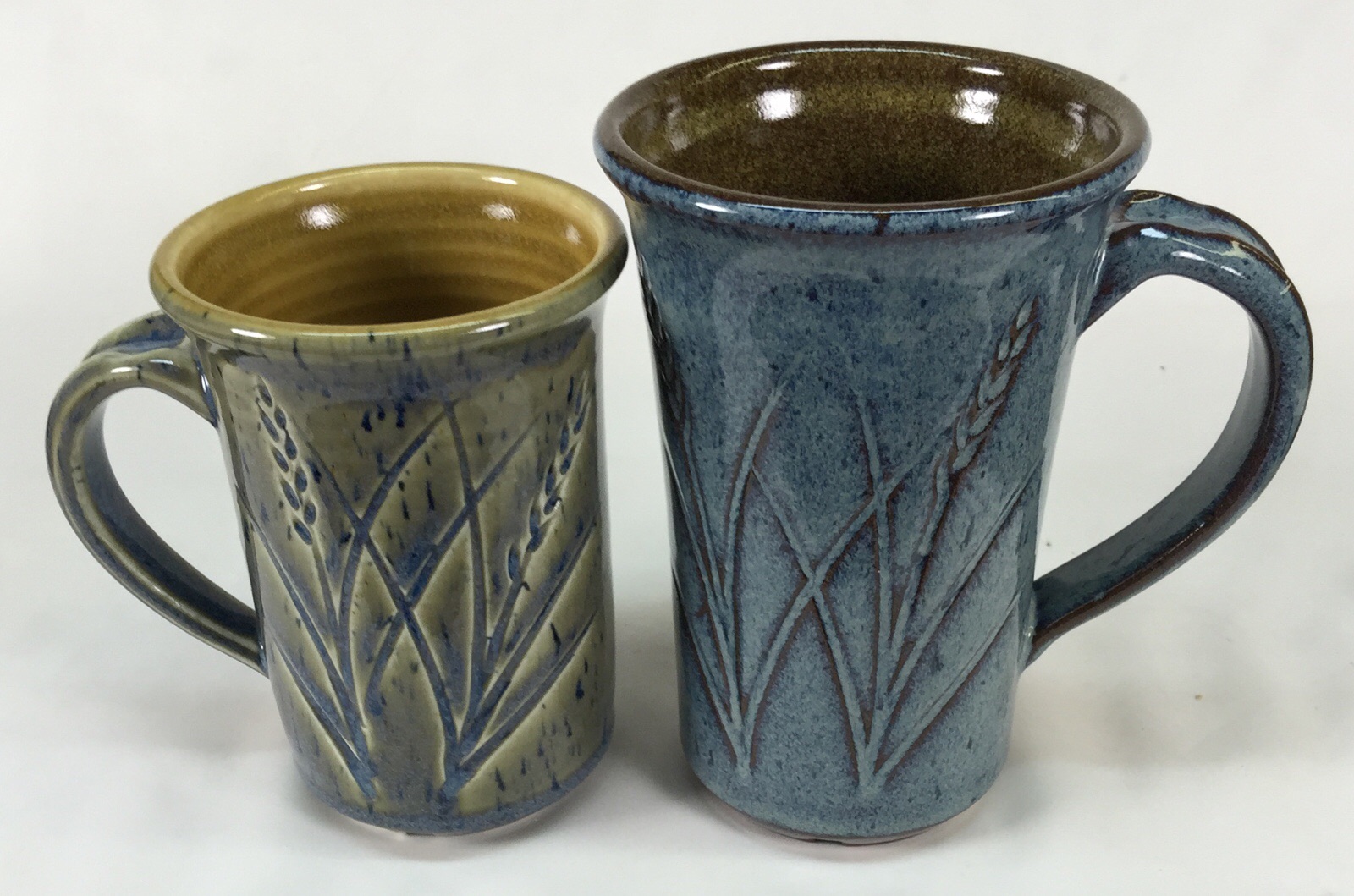
Ravenscrag Slip Flaoting Blue GR6-M does not require special firing like the Alberta Slip GA6-C version. However it does need cobalt and iron to get the blue. Here you see it on porcelain (M370) and a red stoneware (M390).
